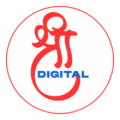Understanding Pay-Per-Click (PPC) Advertising: A Comprehensive Guide for Businesses
In the ever-evolving world of digital marketing, businesses are constantly seeking effective strategies to drive traffic, increase visibility, and ultimately boost sales. Among the various online advertising models available, Pay-Per-Click (PPC) advertising stands out as a powerful and efficient method to reach potential customers quickly and cost-effectively. Whether you’re a small business owner looking to grow your customer base or a marketing professional aiming to optimize your ad spend, understanding the fundamentals of PPC is essential.
Learn how Shri Digital’s expert marketing services can boost your traffic, leads, and sales.
What is Pay-Per-Click (PPC) Advertising?
PPC is an online advertising model in which advertisers pay a fee each time one of their ads is clicked. Essentially, it’s a way of buying visits to your website rather than earning them organically. One of the most popular forms of PPC is search engine advertising, where ads appear at the top of search engine results pages (SERPs) when users search for specific keywords.
The most well-known PPC platform is Google Ads, though others like Microsoft Advertising (formerly Bing Ads), Facebook Ads, Instagram Ads, and LinkedIn Ads also offer PPC advertising formats.
How PPC Works
PPC advertising operates on a bidding system. Advertisers select keywords relevant to their business and bid on them. When users search for those keywords, an auction determines which ads appear in the search results based on several factors:
Bid amount: How much you’re willing to pay per click.
Ad quality: Google, for example, uses a Quality Score based on relevance, landing page experience, and expected click-through rate (CTR).
Ad extensions and format: Features like sitelinks, call buttons, and location info can improve performance.
If your ad wins the auction, it appears prominently on the search engine results page. You’re then charged only when a user clicks on your ad.
Benefits of PPC Advertising
Immediate Visibility
Unlike SEO, which can take months to show results, PPC ads can appear on the first page of search results within hours of launching a campaign.Highly Targeted
PPC allows you to target audiences by demographics, location, device, time of day, language, and even specific interests or behaviors.Measurable Results
Every aspect of a PPC campaign—from impressions to clicks to conversions—can be tracked and analyzed, allowing for precise ROI measurement.Budget Control
You can set daily or monthly budgets, cap bids, and pause or stop campaigns at any time.Brand Exposure
Even if users don’t click your ad, they still see your brand name and message, increasing visibility and awareness.
Key Components of a Successful PPC Campaign
To get the most out of PPC advertising, a campaign must be carefully planned and optimized. Here are the core components:
1. Keyword Research
Effective PPC starts with identifying the right keywords. Use tools like Google Keyword Planner, SEMrush, or Ahrefs to find high-volume, low-competition terms relevant to your products or services.
2. Compelling Ad Copy
Your ad copy should be clear, concise, and persuasive. Highlight unique selling points, include a strong call-to-action (CTA), and ensure it aligns with the keywords and user intent.
3. Landing Page Optimization
The landing page must be relevant to the ad and provide a seamless user experience. A slow, confusing, or irrelevant landing page can lead to high bounce rates and low conversion rates.
4. A/B Testing
Test different versions of your ads (headlines, descriptions, CTAs) to see what performs best. Continuously refine your ads based on performance data.
5. Conversion Tracking
Set up conversion tracking through platforms like Google Ads or Google Analytics to monitor how users interact with your website post-click and measure the true value of your PPC spend.
Common PPC Mistakes to Avoid
Poor keyword targeting: Bidding on broad or irrelevant keywords can waste your budget.
Ignoring negative keywords: These prevent your ads from showing up for unrelated searches.
Not optimizing landing pages: Even the best ads won’t convert if the landing page is ineffective.
Setting and forgetting: PPC campaigns require ongoing monitoring and optimization.
Chasing only low CPCs: Sometimes a higher cost-per-click is justified if it leads to better conversions.
PPC vs. SEO: Which is Better?
PPC and SEO serve different purposes. PPC provides immediate results and can target very specific audiences, while SEO offers long-term benefits and builds trust through organic visibility. Ideally, businesses should invest in both strategies to maximize their online presence.
Final Thoughts
Pay-Per-Click advertising is a versatile and highly effective tool in the digital marketing arsenal. When executed correctly, it can deliver fast results, high ROI, and valuable insights into your audience’s behavior. Whether you’re looking to generate leads, increase sales, or grow brand awareness, PPC can play a critical role in your overall marketing strategy.
But remember, successful PPC is not a “set it and forget it” tactic. It requires continuous testing, optimization, and strategic thinking. If managed well, it can be one of the most powerful drivers of growth for your business.
